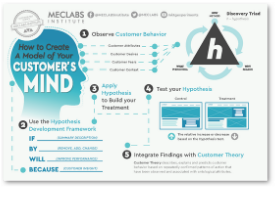Starting a blog is easy. Keeping a blog going for more than a few months is hard. If you are one of the relatively few, the proud, the multi-year bloggers, you should give yourself a gold medal for sustained effort above most people’s capacities.
However, is your hard work really paying off as much as it could?
Very few blogs are optimized for success. Here are the top 5 action items I’ve been testing on a side blog of my own that you can use to improve your blog today — easily, cheaply and quickly.
#1. Add search capability
Blog visitors love to search your blog for posts and content that directly interests them. A search box is a fantastic engagement device to get more page views and more engagement.
After I tested adding a search-this-blog box at the bottom of my own personal blog’s homepage, the search results page became the second most popular page on the entire blog!
Google is just one of several providers offering free blog search tools that you can add to your blog’s template with a few mouse clicks. I’m not even remotely technical, so if I could do it, you can, too.
#2. Increase your “older posts” hotlink size
Most blog templates feature an “older posts” hotlink that appears at the end of the page, so when visitors have read a page, they can click on it to keep going. If your blog doesn’t have this link, add one to your template immediately. If your blog has this link already, enlarge the point size. I made mine as big as the headline type so it could catch the eye.
Sure, some people will click on hotlinks on your blog navigation column to go to other pages, but a heck of a lot won’t. Adding prominent “older posts” link at the end of every page gets you more page views per visitor. More page views means more engagement.
#3. Offer an email subscription
Drives me nuts — I discover a blog I adore, but it only offers an RSS feed. Like the majority of Internet users, I don’t routinely use or check an RSS reader, but I do routinely check email. If I really like a blog, I would vastly prefer to be pinged via email when a new posting goes up. Otherwise, no matter how much I enjoyed that blog, the chances that I’ll remember to revisit it are slim.
Feedburner is one of several services that allow you to add an email opt-in box for your blog quickly, easily and, best of all, for free. Once you get more than 1,000 opt-ins or so, you may want to graduate the list up to a formal email service provider. This way, you can control the template and look of the email sent, as well as have more access to your list and mailing stats.
#4. Use keyword analysis to inspire more posts
You should be tracking basic blog stats by using free analytics tools, such as Google Analytics, or by tying your blog into your main site’s analytics software. While it’s fine to see how many visitors you get, the most useful report is actually the keyword analysis report.
There, you’ll find a list of the terms that visitors used in external search engines (Yahoo!, Google, MSN, etc.) to find your blog. Sometimes, the list will be an unhappy surprise — lots of visitors may be coming in because of a keyword that occurs in one of your posts that’s not truly reflective of the topic you write about. For example, I once mentioned “Serbian Women” in a headline and now get quite a lot of traffic from what appears to be men looking for love … not quite the readership I had in mind!
Use the list to see which terms you already have traction with. If they appear to be generating useful, relevant traffic, then increase your use of those keywords in other posts, especially in headlines. Obviously, don’t overstuff your keywords, but using a favorite term or phrase over several posts can’t hurt.
#5. Include a contact hotlink in your sig
If you want readers to contact you, perhaps because you offer consulting or other personal services as your line of work, don’t hide your contact information! I’m startled by how many bloggers hide their full name and contact info under a generic “About Me” button somewhere on the nav bar.
Don’t force visitors to seek that button out and click on it for answers. Instead, include a brief sig and even a “Contact Me” hotlink as your “name” at the end of each post.
This is something you can set up quickly in your blog template without any extra cost.
Good luck and let me know how it goes. Got more blog improvement tips for your fellow Sherpa readers? Use the comment box below!












